CountDownLatch 相当于一个减法计数器, 构造方法指定一个数字,比如6, 一个线程执行一次,这个数字减1, 当变为0 的时候, await()方法,才开始往下执行,,
看这个例子
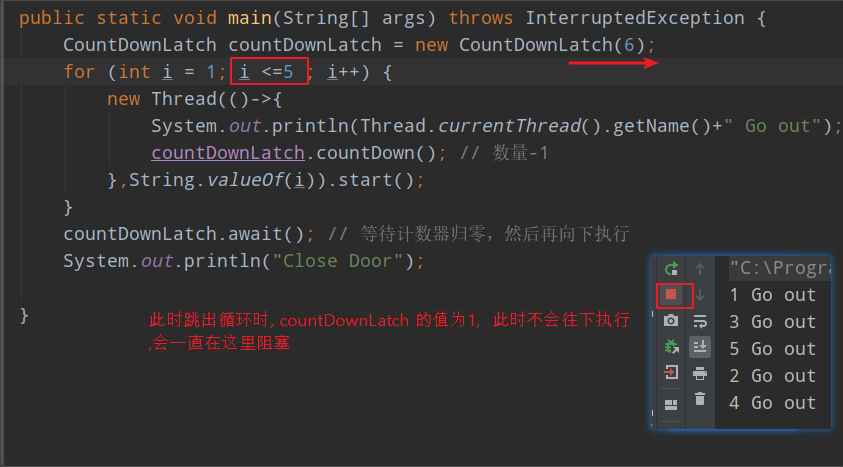
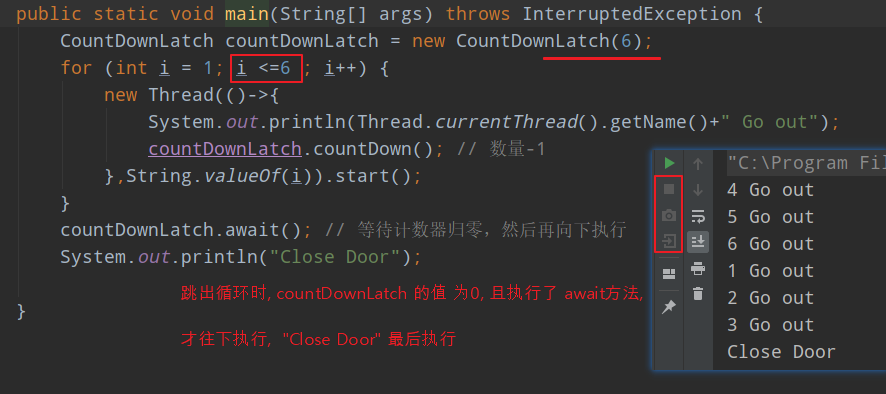
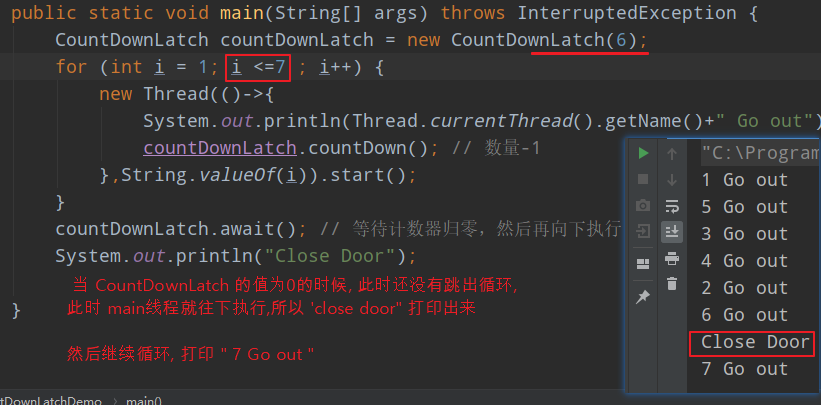
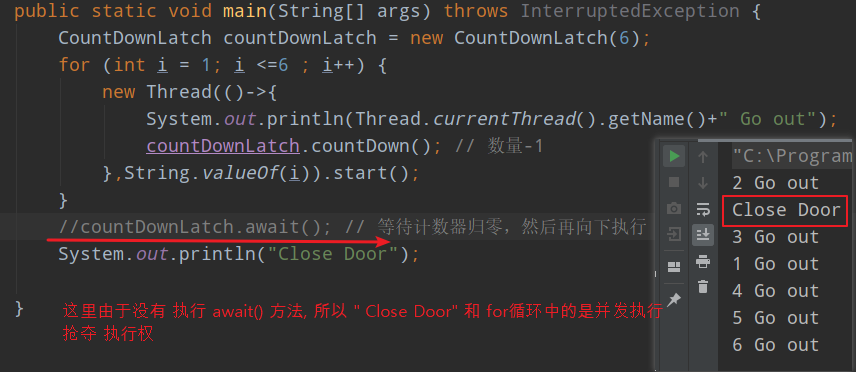
CyclicBarrier 的用法, 字面意思:循环栅栏,

这是构造方法, 第一个参数parties 是线程数量, 第二个参数是barrierAction: 最后一个线程执行完毕之后,要做的操作 ,

重要的方法: await(), 表示这个方法的调用线程已经执行完毕,到达了栅栏, BrokenBarrierException 表示栅栏已破坏原因可能是其中一个线程 await() 时被中断或者超时
基本使用: 一个线程组的所有线程都执行完毕之后, 再往下执行, 再比如一个线程组的计算,最终把计算结果合并
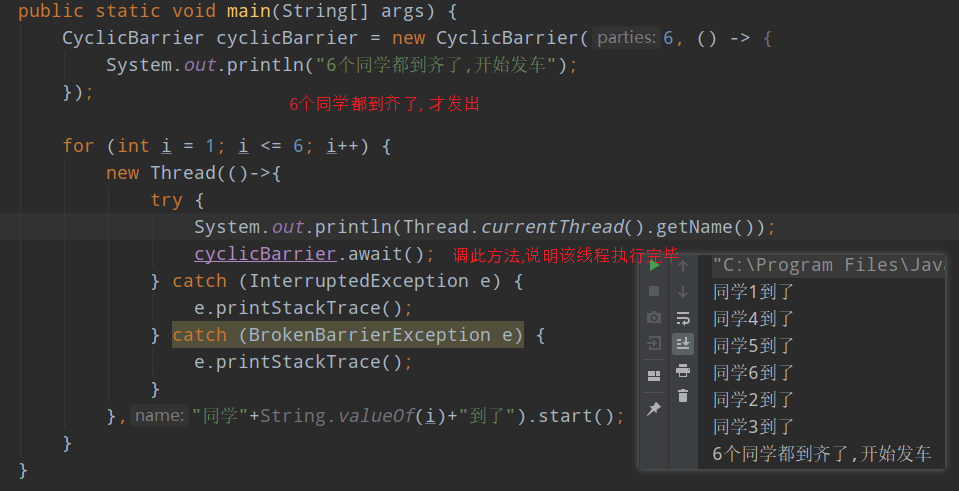
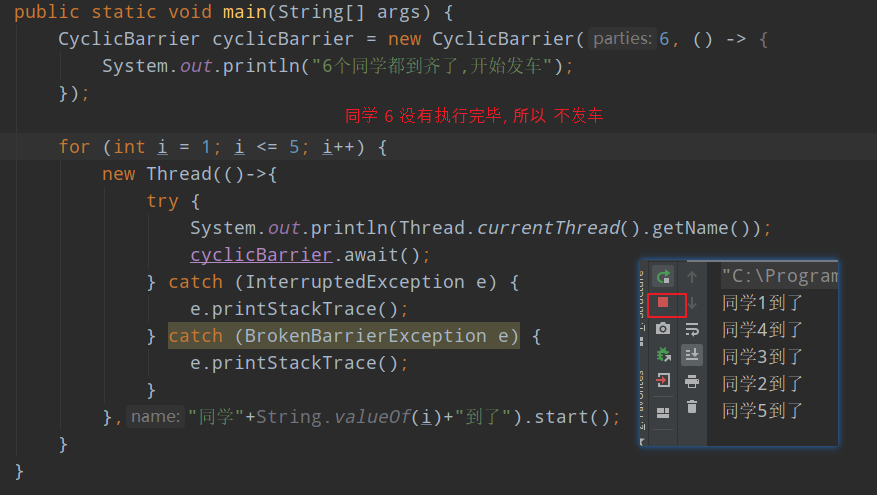
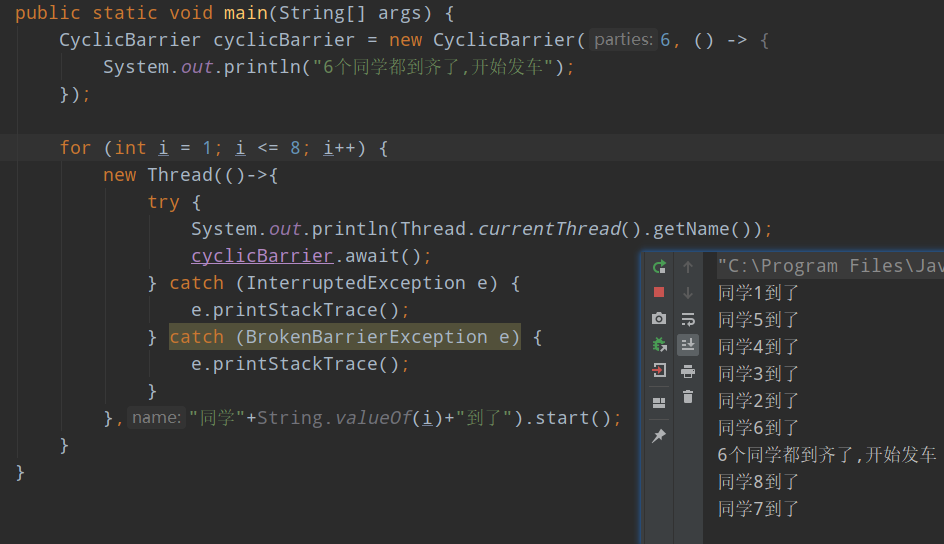
Semaphore 的用法 信号量: 控制访问某个资源的并发数量, acquire()这个方法用来获取一个许可, 如果没有获取到就等待, release()方法用来释放这个许可, 实际应用:比如某个共享文件最大多少人访问控制
这里模拟, 业务逻辑,共10个线程,每次只能3个线程并发执行,
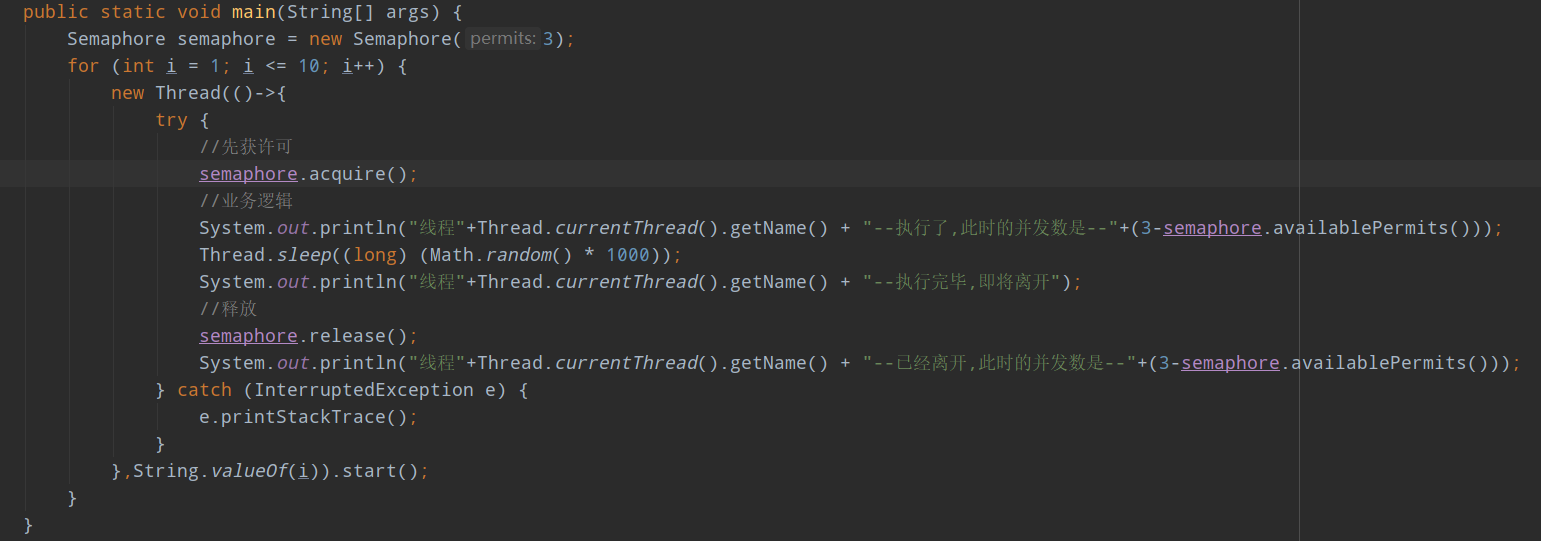
结果为:
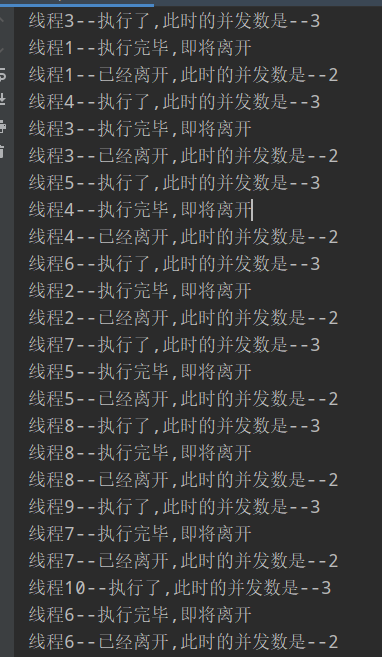
读写锁 demo
public class ReentrantReadWriteLockDemo {
public static void main(String[] args) {
MyCashMap cash = new MyCashMap();
//写数据,一个一个写, 写缓存的时候要保证原子性
for (int i = 1; i <= 10; i++) {
int temp = i;
new Thread(()->{
cash.putObject(Thread.currentThread().getName(),temp);
},"线程"+String.valueOf(i)).start();
}
//读数据,都可以读
for (int i = 0; i < 10; i++) {
new Thread(()->{
cash.getObject(Thread.currentThread().getName());
},"线程"+String.valueOf(i)).start();
}
}
}
//自定义缓存
class MyCashMap{
private Map<String,Object> map = new HashMap<>();
private ReentrantReadWriteLock readWriteLock = new ReentrantReadWriteLock();
//加入缓存, 写数据加写锁, 只能一个线程调用
public void putObject(String key ,Object value){
readWriteLock.writeLock().lock();
try {
System.out.println(key + "---" + value);
map.put(key,value);
} catch (Exception e) {
e.printStackTrace();
} finally {
readWriteLock.writeLock().unlock();
}
}
//取数据, 加读锁,都可以读取
public void getObject(String key){
readWriteLock.readLock().lock();
System.out.println(map.get(key));
readWriteLock.readLock().unlock();
}
}
阻塞队列 BlockingQueue, 使用场景: 多线程并发处理, 线程池
异步回调类 CompletableFuture
public class test2 {
public static void main(String[] args) throws ExecutionException, InterruptedException {
CompletableFuture<Void> completableFuture = CompletableFuture.runAsync(()->{
try {
TimeUnit.SECONDS.sleep(2);
} catch (InterruptedException e) {
e.printStackTrace();
}
System.out.println(Thread.currentThread().getName()+"runAsync--> void");
});
System.out.println(completableFuture.get());//null 异步执行,无返回
//这里是 异步执行,有结果回调
CompletableFuture<String> completableFuture1 = CompletableFuture.supplyAsync(()->{
try {
TimeUnit.SECONDS.sleep(2);
} catch (InterruptedException e) {
e.printStackTrace();
}
System.out.println(Thread.currentThread().getName() + "--supplyAsync-->String");
return "异步执行结果: 123123";
});
System.out.println(completableFuture1.get());
}
/**
* 另一个demo
* @throws ExecutionException
* @throws InterruptedException
*/
@Test
public void test01() throws ExecutionException, InterruptedException {
C c = new C();
String result = c.ask("1+1=?");
System.out.println(result);
}
}
class C {
public String ask(String question) throws ExecutionException, InterruptedException {
System.out.println("C 收到了一个问题, 交给D解决,C 要出去玩");
//这里使用异步回调, 有返回
CompletableFuture<Integer> completableFuture = doQuestion(question);
System.out.println("C出去玩了");
//获取D 的执行结果为
return "D的执行结果为:"+completableFuture.get();
}
private CompletableFuture<Integer> doQuestion(String question) {
CompletableFuture<Integer> completableFuture = CompletableFuture.supplyAsync(()->{
try {
TimeUnit.SECONDS.sleep(3);
} catch (InterruptedException e) {
e.printStackTrace();
}
System.out.println(Thread.currentThread().getName() + "--supplyAsync-->Integer");
return 2;
});
return completableFuture;
}
}

https://www.jianshu.com/p/6bac52527ca4
这里使用的CompletableFuture.supplyAsync(runnable,executor),如果没有指定executor,会默认使用ForkJoinPool这个线程池,但是这个线程池不是自定义的,不确定内部的各个参数详情,比如阻塞队列长度,ForkJoinPool是维护了一个无限长的队列来存放任务,如果长度很大很大,阻塞队列永远装不满,反而会出现OOM的风险,所以这里可以自定义线程池
关于forkJoinPool
https://blog.csdn.net/wojiao228925661/article/details/89505575